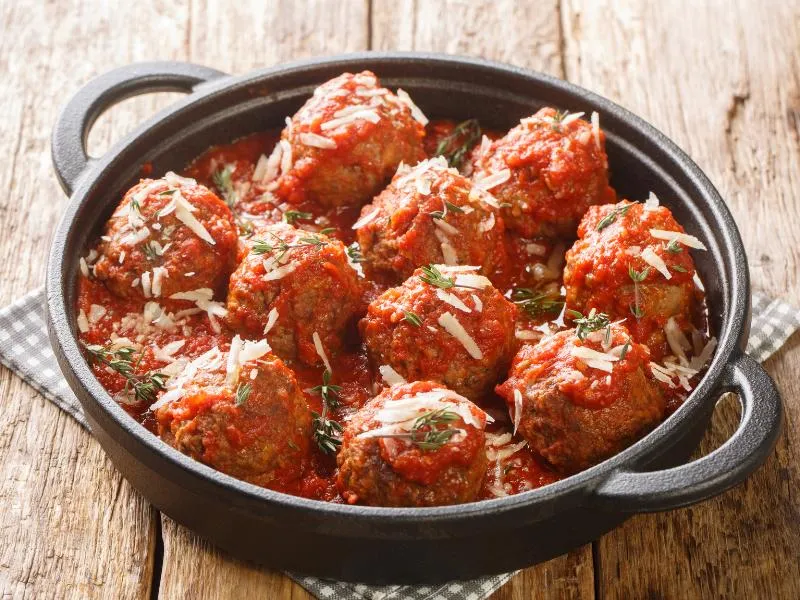Italian Polpette
Tender, savory meatballs of ground meat, breadcrumbs, herbs, and cheese, simmered in tomato sauce.
👉 View Authentic Recipe 👈
About This Dish
Polpette, Italian meatballs, have been a cornerstone of Italian family cooking for centuries, with variations found throughout the country but particularly beloved in southern regions like Campania. Unlike their American counterparts, authentic Italian polpette are typically smaller, lighter in texture, and often served as a second course (secondo piatto) rather than atop pasta.
Traditional polpette combine ground meat (usually a mixture of beef and pork), stale bread soaked in milk, eggs, grated Parmigiano-Reggiano or Pecorino cheese, chopped parsley, and sometimes garlic. The secret to their tender texture lies in using a higher ratio of breadcrumbs to meat than most non-Italian versions, along with gentle handling during formation and cooking.
In Italian households, polpette represent the essence of cucina povera (peasant cooking) – making something delicious from humble ingredients. Sunday family gatherings often feature these meatballs simmered in a simple tomato sauce, where they’re appreciated both for their flavor and for the way they infuse the sauce with richness.
🧑🍳 Analyzed by CucinaBot
Why This Dish Works
Polpette achieve their distinctive texture through the perfect balance of proteins, fats, and starches. The soaked bread creates a panade that traps moisture within the meatballs, preventing the proteins from binding too tightly during cooking. This results in a tender, almost fluffy interior texture, while the outer surface caramelizes during browning, developing complex flavor compounds through the Maillard reaction. The slow simmer in tomato sauce allows for gentle heat transfer, further tenderizing the meat while infusing it with acidity that balances the richness.
Key Success Factors
- Bread-to-Meat Ratio: Authentic polpette use more bread than most non-Italian versions, creating a lighter texture
- Gentle Mixing: Overworking the meat mixture develops gluten and makes tough meatballs; mix just until ingredients are combined
- Proper Moistening: The bread should be fully soaked in milk and gently squeezed, not dried out
- Two-Stage Cooking: First browning for flavor development, then gentle simmering for tenderness
- Resting Time: Allowing the formed meatballs to rest in the refrigerator before cooking helps them hold shape
Common Pitfalls
Many non-authentic recipes err by using too little bread, resulting in dense, heavy meatballs. Another common mistake is adding too many herbs or seasonings, which can overpower the delicate meat flavor. Authentic Italian polpette rely on quality ingredients rather than extensive seasoning. Many recipes also skip the important step of browning before simmering, which sacrifices depth of flavor.
How to Judge Authenticity
When reviewing recipes, look for these markers of authenticity:
- Contains day-old bread soaked in milk (not dry breadcrumbs)
- Uses a mixture of meats (typically beef and pork)
- Includes real Italian cheese (Parmigiano-Reggiano or Pecorino)
- Features minimal herbs (primarily parsley, perhaps a hint of other herbs)
- Specifies modest size (authentic polpette are typically 1-2 inches in diameter)